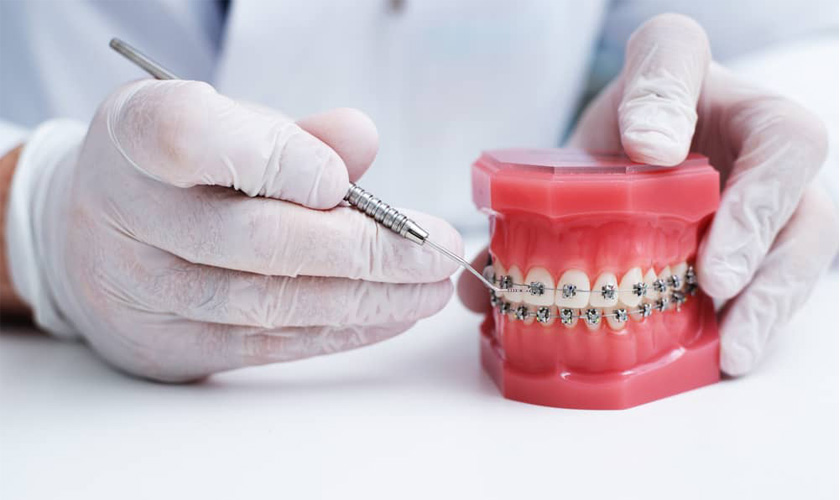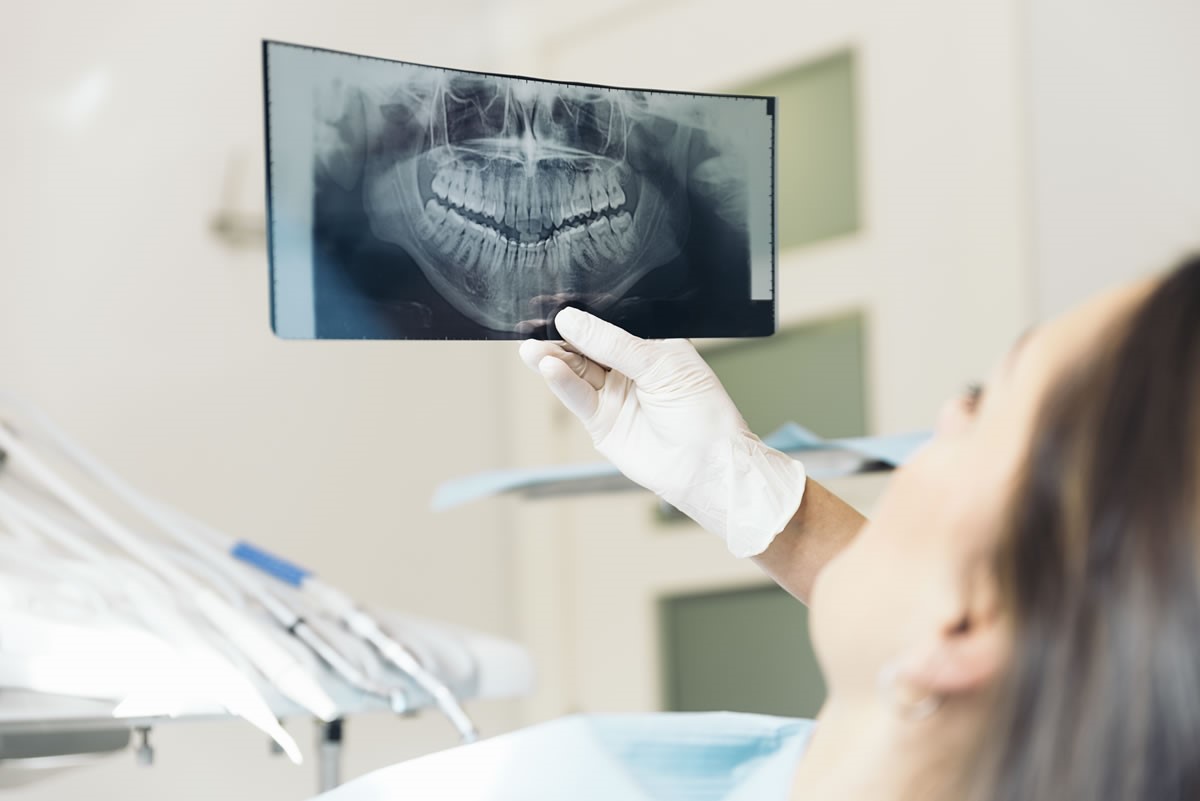Crooked, protruding, or misaligned teeth not only affect aesthetics but also cause difficulties in chewing and oral hygiene. Therefore, braces are one of the optimal solutions to correct these issues, bringing you a confident smile and healthy teeth. So, what are braces and how many stages do they involve? How does the orthodontic process unfold? Let’s explore the details with Amanda Dental Clinic below!
What Are Braces?
Braces (also known as orthodontics) are a dental treatment method that uses orthodontic appliances such as brackets, archwires, or clear aligners to move teeth into the correct position on the dental arch, improving both aesthetics and chewing function. Typically, the orthodontic process can take 1–3 years or even longer (depending on individual conditions), the severity of dental misalignment, and the treatment plan agreed upon with your dentist.
This is a specialized form of orthodontics that can address dental issues such as crowding, crooked teeth, overbite, underbite, or temporomandibular joint (TMJ) disorders. The main goal is to restore optimal chewing function while balancing facial proportions and preventing future oral health problems.

Benefits of Getting Braces
Braces not only help improve your smile but also offer numerous benefits for oral and overall health. Below are the main advantages of orthodontics:
Enhanced Aesthetics
- Corrects misaligned teeth: Orthodontics moves crooked, crowded, or rotated teeth into proper alignment on the arch. This results in straight, aligned teeth that give you a harmonious and attractive smile.
- Fixes overbite, underbite, and gaps: Braces can correct overbite (protruding upper front teeth), underbite (protruding lower teeth), and spacing issues (gaps between teeth). These corrections significantly enhance your smile and facial appearance.
- Improves bite alignment: Braces align your bite correctly so the upper and lower teeth fit together properly. A well-aligned bite not only enhances chewing but also contributes to a more balanced facial appearance.
- Reduces facial asymmetry: In some cases, a misaligned bite can cause facial asymmetry. Orthodontic treatment can address this, resulting in a more symmetrical and harmonious face.
Improved Chewing Function
With a proper bite, you can chew food more thoroughly, especially tough or hard foods. This enhances nutrient absorption and reduces the risk of digestive issues like indigestion, bloating, or constipation.
Better Oral Health
- Easier oral hygiene: Well-aligned teeth are easier to clean, reducing the risk of cavities, gum disease, and other oral health issues.
- Reduces risk of TMJ disorders: A misaligned bite can lead to TMJ pain. Orthodontics helps alleviate this issue.
- Prevents tooth loss: Crooked teeth can place uneven pressure on surrounding teeth, increasing the risk of premature tooth loss. Braces help protect teeth and prevent this outcome.
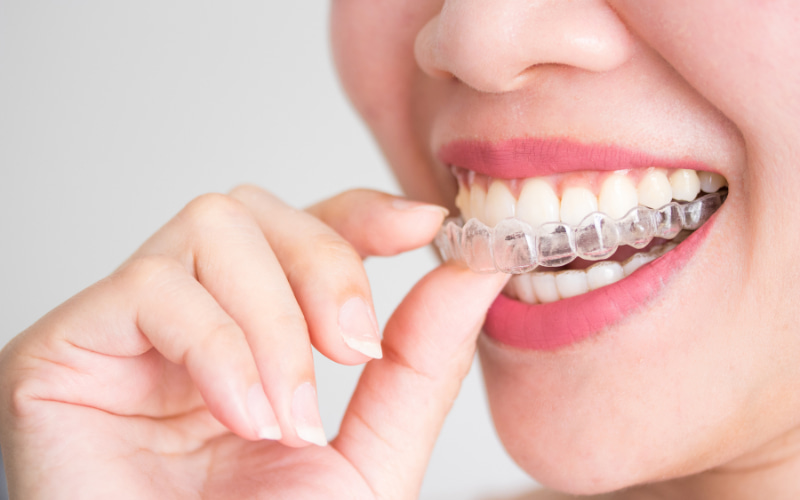
No Need for Dentures
Braces offer a simple solution for closing gaps left by missing teeth, eliminating the need for dentures (ideal for cases of a few missing teeth). Natural teeth always provide better chewing sensation and convenience than artificial ones.
Speech Improvement
Misaligned teeth can hinder tongue movement within the mouth, affecting accurate pronunciation. Additionally, gaps between teeth may create whistling or unwanted sounds when speaking. Braces help correct these issues, allowing for clearer and more confident speech.
Psychological Benefits
Crooked teeth can make many people feel self-conscious or shy when smiling or speaking. Confidence not only helps you succeed in communication but also impacts other areas of life such as work, education, and social interactions.
Early Prevention of Oral Issues in Children
Early prevention and intervention of dental problems in children provide many benefits. Early diagnosis and orthodontic treatment help guide jaw development in the right direction, making future treatment easier and potentially reducing the need for surgical intervention.
Popular Types of Braces Today
Currently, there are many popular orthodontic methods, each with its own advantages and disadvantages. Below are some of the most common options:
Metal Braces
Metal braces are the traditional orthodontic method, using a system of high-quality, stainless-steel brackets and archwires to reposition the teeth. Nowadays, metal braces are increasingly refined with smaller, more aesthetic brackets that offer improved comfort for the user.
Metal braces are an economical option, generally requiring less treatment time than other methods and proving highly effective in treating various dental problems.
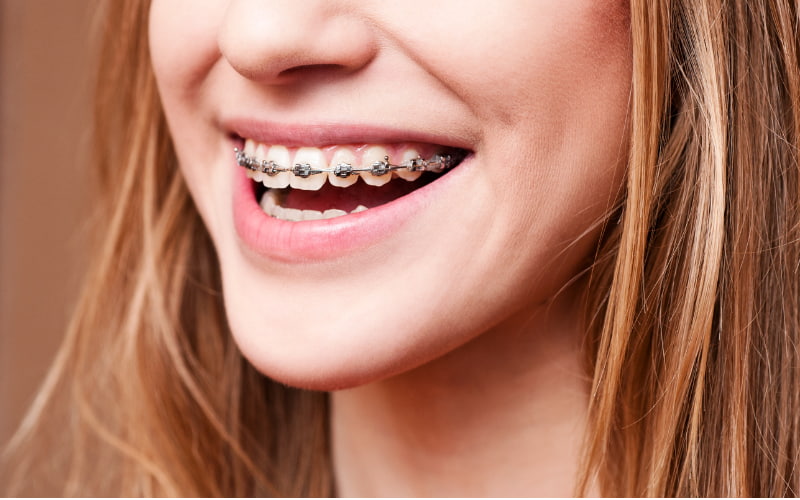
Ceramic Braces
Ceramic braces are a popular orthodontic method that combines the effectiveness of metal braces with improved aesthetics. Ceramic brackets are similar in size to metal ones but closely match the color of natural enamel, making them less noticeable. The orthodontic results are comparable to those of traditional metal braces.
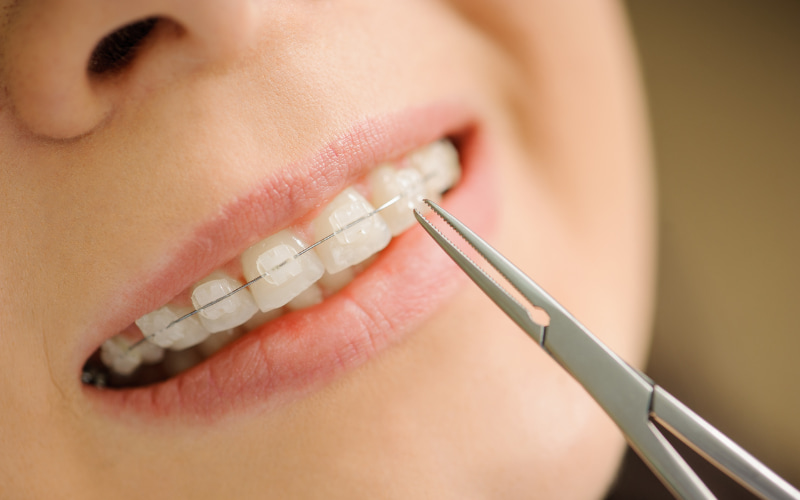
Self-Ligating Braces
Self-ligating braces (also known as self-locking braces) are a significant advancement in orthodontics, offering several benefits over traditional systems.
Unlike traditional braces, these brackets are designed with a sliding mechanism or slot to hold the archwire in place, eliminating the need for elastic bands. This system allows the wire to apply a more stable and consistent force, which can significantly reduce treatment time.
Additionally, you won’t need to visit the dentist as frequently for adjustments. Unlike traditional braces, there’s no need to change elastic ties every 2–3 weeks or reattach dislodged brackets.
Self-ligating brackets come in two main types: ceramic and metal. Each has its own pros and cons. To choose the most suitable method, it’s best to consult with a reputable dental clinic for a thorough examination.
Clear Braces
Clear braces are an orthodontic method that uses the same bracket and archwire system to move teeth into desired positions, but the difference lies in the material. The brackets are made from transparent or semi-transparent materials, enhancing aesthetic appeal.
These brackets are usually made from ceramic or crystal and resemble natural teeth in color, making them less noticeable when smiling or speaking. This is a major advantage, helping users feel more confident during communication.
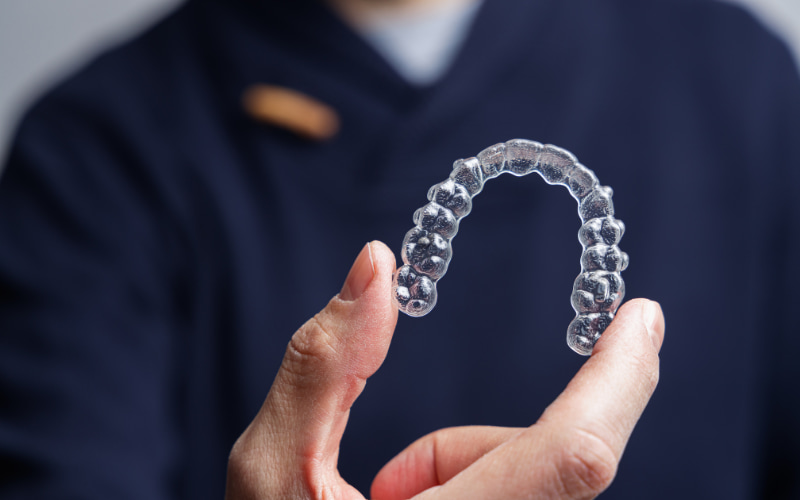
Things to Know Before Getting Braces
Before deciding to get braces, you should thoroughly research and prepare to ensure a smooth and effective orthodontic process. Here are several important considerations:
Determine Your Oral Condition
The first step is to visit a dental clinic for an in-person consultation to assess the level of dental misalignment. X-rays are typically required to examine jawbone structure and tooth positioning. Additionally, your dentist may take a dental impression using plaster to create a model of your teeth, allowing both the patient and doctor to better visualize the case.
Using X-rays, photos, and plaster models, the dentist will accurately diagnose your condition, assess complexity, and provide a suitable treatment plan. Common cases that require orthodontics include overbite, underbite, spacing, and crowding.
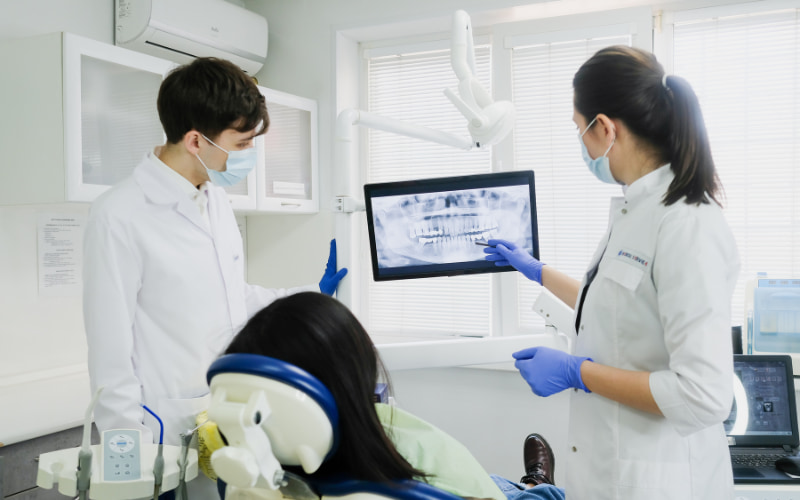
Ideal Age for Braces
Many people believe braces are only for children or teens. However, adults over 30 have successfully undergone orthodontic treatment. Late treatment is often due to financial limitations in the past or a recent realization of oral health’s importance—or simply a desire for improved aesthetics.
Explore and Choose the Right Method
There are many orthodontic methods available today such as metal braces, ceramic braces, self-ligating braces, and clear aligners. Each has pros and cons. You should research carefully and consult your dentist to choose the option that suits your dental condition and budget.
Choose a Reputable Dental Clinic and Skilled Dentist
This is the most important factor determining the success of your treatment. Research clinics thoroughly, ask for recommendations from family or friends, or look up reviews on reputable forums and websites. Make sure the dentist is licensed, experienced, and specialized in orthodontics.
Thorough Examination and Consultation
Before getting braces, the dentist will conduct a general oral health check-up, take X-rays, and make dental impressions. Based on the results, they’ll recommend a suitable method, expected treatment duration, and cost. You should also openly discuss any concerns with your dentist.
Treat Any Existing Dental Issues
Before beginning orthodontic treatment, you should address any existing oral conditions such as cavities, gingivitis, or periodontitis. This ensures oral health throughout the treatment and prevents unwanted complications.
How Long Does Braces Treatment Take?
The duration of orthodontic treatment depends on various factors such as the patient’s age, dental condition, the dentist’s skill level, and any additional treatments needed. Generally, if tooth extraction is not required, the process takes about 18 months; if extractions are involved, it can take around 24 months to achieve the desired smile.
In cases where the patient has impacted teeth or underlying oral conditions, treatment time may be longer, depending on whether the patient is a child or an adult. For patients aged 25 and above, whose jawbones are more rigid, the process can take approximately 2 years—longer than the ideal age of 9 to 12 years, where it only takes about 6 months to 1 year.
Tooth movement occurs gradually during orthodontic treatment, so you may not see noticeable changes until nearing the end. Therefore, understanding the stages of braces helps you stay patient and committed throughout the journey to achieve the best results.
Do Braces Weaken Teeth?
Braces are a common orthodontic method, but many people worry that it may weaken their teeth. In fact, braces do not make teeth weaker, do not alter the tooth’s structure or shape, and do not damage enamel—as long as the procedure is performed at a reputable clinic by a skilled and experienced dentist.
The Stages of Orthodontic Treatment
The braces process typically includes several stages, depending on the patient’s dental condition and the orthodontic method used. Below are the main stages:
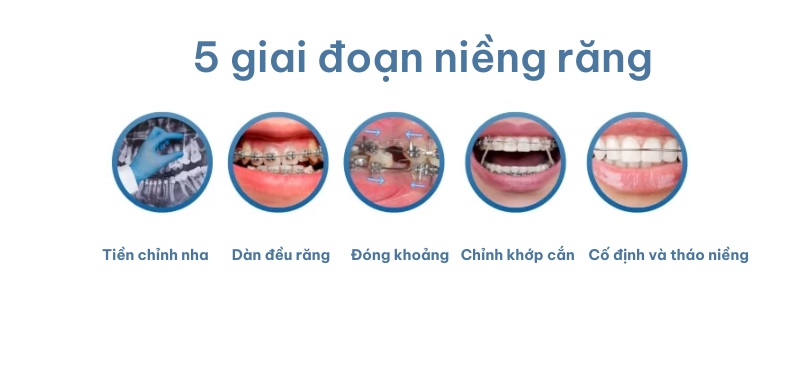
Examination and Treatment Planning
This stage occurs before placing the brackets. The dentist will perform a general check-up, take X-rays, and evaluate the condition of your teeth and jawbone to create a customized treatment plan. The dentist will also advise you on which type of braces is best suited to your goals and budget.
After 3 Months
Depending on the case, within the first 3 months, the dentist may extract teeth or perform interproximal reduction (IPR). If teeth are severely crowded, noticeable improvements are often seen in this period. While alignment may not yet be perfect, early positive results suggest that the teeth are responding well to treatment.
After 6 Months
Teeth continue to move, but the rate of change is slower compared to the first 3 months. In crowded cases, while alignment improves, issues like flared front teeth may arise. During this stage, careful monitoring and adjustment by the dentist are crucial. Patients should not worry if teeth appear slightly misaligned at this point.
After 9 Months
At this halfway point, the dental arch begins to stabilize, and improvements in arch width and bite alignment become evident, with the upper and lower teeth meeting more harmoniously.
After 15 Months
The teeth undergo their final adjustments. Minor imperfections are corrected to enhance overall aesthetics and achieve the desired outcome.
Completion of Treatment
This timeline varies based on each individual’s dental condition. Once the teeth are fully stabilized, the dentist will remove the braces and assess whether a retainer is necessary. Instructions will be given to help maintain long-term results and ensure the effectiveness of the treatment.
How Much Do Braces Cost?
The cost of braces varies depending on several factors, including:
Type of Braces:
- Traditional metal braces are usually the most affordable.
- Ceramic or self-ligating braces tend to be more expensive.
- Clear aligners like Invisalign are the most costly option.
Complexity of the Case: More severe misalignments or bite issues require more time and effort, thus increasing the cost.
Clinic Location: Prices are generally higher in major cities compared to rural areas.
Dentist’s Experience: Highly skilled and experienced orthodontists may charge more for their services.
Below is a price list of popular orthodontic services at Amanda Dental Clinic:
| AESTHETIC ORTHODONTICS | ||
| Orthodontic deposit | 02 Arches | 5,000,000 |
| Aesthetic orthodontics | 01 Arch | 10,000,000 |
| Early orthodontics | 02 Arches | 12,000,000 |
| Orthodontics with removable appliances | 02 Arches | 15,000,000 |
| Fixed metal brackets (easy level) | 02 Arches | 28,000,000 |
| Fixed metal brackets (medium level) | 02 Arches | 38,000,000 |
| Fixed metal brackets (difficult level) | 02 Arches | 48,000,000 |
| Self-ligating metal brackets | 02 Arches | 45,000,000 |
| Fixed ceramic/crystal brackets (easy level) | 02 Arches | 35,000,000 |
| Fixed ceramic/crystal brackets (medium level) | 02 Arches | 45,000,000 |
| Fixed ceramic/crystal brackets (difficult level) | 02 Arches | 55,000,000 |
| Self-ligating ceramic brackets (both arches) | 02 Arches | 60,000,000 |
| Aesthetic Invisalign orthodontics | 02 Arches | 60,000,000 |
| Invisalign orthodontics | 02 Arches | 100,000,000 |
| Re-attach bracket | 01 Bracket | 300,000 |
| Loose bracket after 3 times | 01 Bracket | 450,000 |
Why Choose Amanda Dental Clinic for Aesthetic Braces?
Are you looking for a reputable and high-quality place to get aesthetic braces and transform your smile? Amanda Dental Clinic is the perfect choice for you. Why choose Amanda?
Highly qualified and experienced dental team:
- All dentists at Amanda are top experts in orthodontics, having successfully treated thousands of complex cases.
- With dedication and professionalism, our dentists will consult and provide the most suitable treatment plan for each case.
Modern and advanced technology:
- Amanda is equipped with state-of-the-art machines such as the Kavo OP 3D Pro CT X-ray, iTero Element scanner, and VCEPH 3D software, ensuring accurate and effective diagnosis and treatment.
- Advanced technology shortens treatment time and delivers optimal results.
High-quality orthodontic materials:
- All orthodontic appliances at Amanda are imported directly from developed countries like Germany, the USA, and Italy, ensuring maximum safety and effectiveness.
Closed, safe treatment process:
- The “1 dentist – 1 room – 1 patient” model prevents cross-contamination and ensures privacy and comfort for patients.
Reasonable cost and flexible payment plans:
- Amanda is transparent about pricing and offers flexible installment options, making high-quality orthodontic services more accessible.
Amanda Dental Clinic commits to:
- Bringing you a radiant, confident smile.
- Creating naturally beautiful results that harmonize with your facial features.
- Providing a professional and dedicated treatment experience.
Braces are an effective orthodontic solution that provides numerous aesthetic and health benefits. However, to achieve the best results, you need to choose the right method, seek treatment from a skilled dentist, and strictly follow instructions throughout the process.





